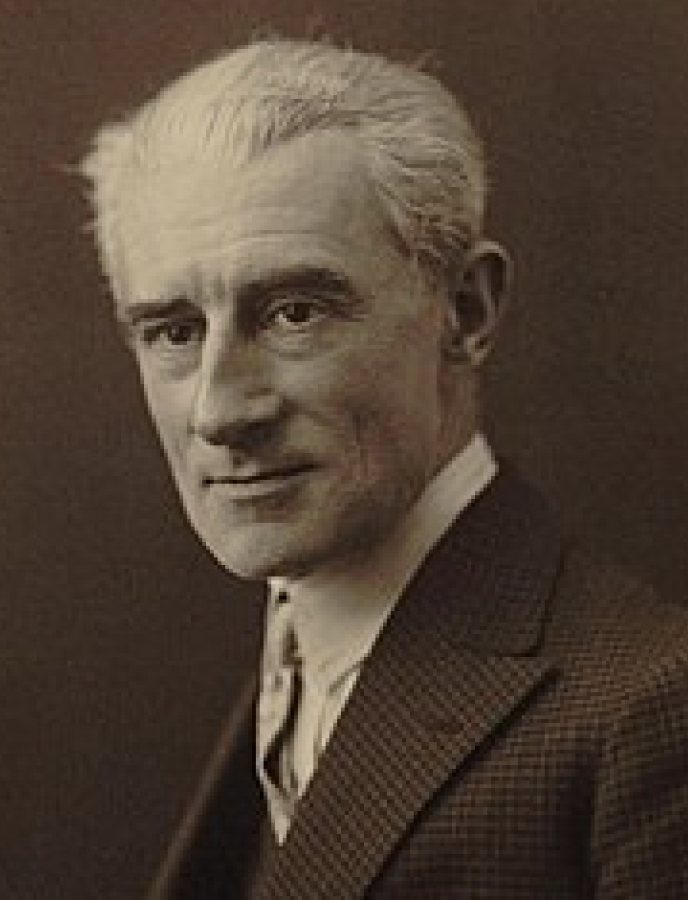The Beauty of Insanity: Bolero
February 11, 2022
Silence. A faint snare drum emerges, sounding a steady, unchanging rhythm, one that is not especially remarkable—except that it will repeat, unfailing, consecutively, 168 more times. One flute sounds, quietly playing the melody that will be slowly carved into the mind of the listener over the next 15 minutes of gradual, sustained crescendo. Instruments are interchanged, some join, some leave for a bit, but the sound gets louder; and the melody remains constant. In the end, the entire orchestra plays together in a resounding fortissime, repeating that same melody one final time.
For the average listener, this piece, despite its odd repetition, is actually quite an enjoyable composition. Indeed, that is what the world thought upon its premiere, and what I thought upon its recommendation by YouTube’s all-knowing algorithm. In 1928, French composer Maurice Ravel revealed to the world what is now his most famous composition, and one of his final pieces—Boléro. The one-movement Boléro, originally composed as a ballet, became a sensation upon premiere. Yet for those who know a little about its context, the piece’s mood, which may be interpreted as a cheerful, constant march forward, transforms into something more sinister and haunting.
According to some, the tune of Boléro buried itself in Ravel’s mind one day while he was on vacation. Upon playing the melody to his friend, Ravel is quoted as saying, “Don’t you think this theme has an insistent quality? I’m going to try to repeat it a number of times without any development, gradually increasing the orchestra as best I can.” Unlike his previous compositions, which were much more complex, there was only the same unceasing beat—quite strange for a brilliant composer such as Ravel. Friends grew concerned with his growing absent-mindedness; it seemed as if Ravel had suddenly become obsessed with repetition. Boléro marked a new, sudden, and final phase for his compositions, as his health declined. According to famous Russian composer Igor Stravinsky, “his final years were cruel, for he was gradually losing his memory and some of his coordinating powers, and he was, of course, quite aware of it.” The great Ravel would pass away only nine years after Boléro.
Researchers have suggested that Ravel suffered from primary progressive aphasia (PPA), a type of neurological disease that leads to the gradual deterioration of brain tissue and erosion of language capabilities, especially in the left hemisphere of the brain. Its causes are unknown, but its effects are devastating. Individuals suffering from PPA slowly lose the ability to communicate and comprehend language. Because of the gradual nature of the syndrome, early symptoms are minor and much less severe than those experienced later on; eventually, most patients become mute shells that can no longer understand language. It was the steady degradation of Ravel’s left hemisphere, researchers claim, that shaped his final works. Composing with little more than half a brain, Ravel did what he could; melodic complexity suffered, and in its place, orchestral timbres—simply the combinations of instruments used—took precedence. This is because timbre, unlike melody, is believed to be mostly in the domain of the right hemisphere, which, in Ravel’s case, was mostly fine. Examining Boléro, this hypothesis makes sense; Ravel relied on a wide variety of instruments and the gradual increase of the orchestra instead of melodic development.
It is unclear whether Ravel was aware of his declining condition in 1928 when his piece premiered. Yet the deteriorating state of his brain undeniably had an impact on his music, likely affecting his judgment and reasoning even before he could recognize it—a concerning thought. I encourage you all to spend 15 minutes of your day, perhaps when doing homework, or even while driving, to listen to this great piece of music; and when you do, remember that beauty can be found even in the darkest places.
Further reading for those interested:
A woman’s Bolero-like symptoms and sudden obsession with the piece:
https://www.wnycstudios.org/podcasts/radiolab/articles/unraveling-bolero
https://www.youtube.com/watch?v=r30D3SW4OVw
A throwback to the eighties:
